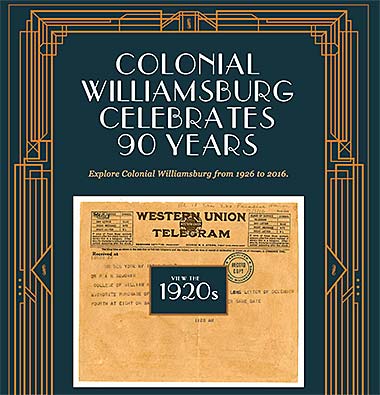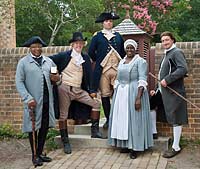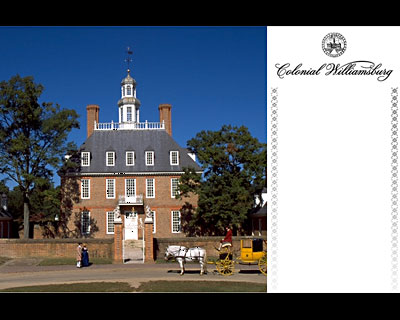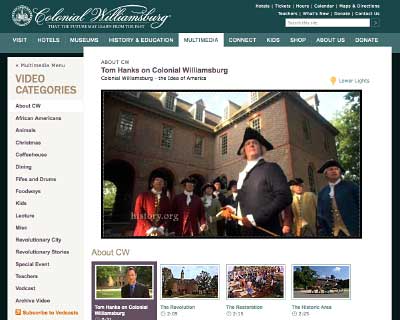Page content
The history of Colonial Williamsburg
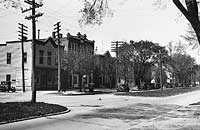
Historical background
Williamsburg was the thriving capital of Virginia when the dream of American freedom and independence was taking shape and the colony was a rich and powerful land stretching west to the Mississippi River and north to the Great Lakes. For 81 formative years, from 1699 to 1780, Williamsburg was the political, cultural, and educational center of what was then the largest, most populous, and most influential of the American colonies. It was here that the fundamental concepts of our republic — responsible leadership, a sense of public service, self-government, and individual liberty — were nurtured under the leadership of patriots such as George Washington, Thomas Jefferson, George Mason, and Peyton Randolph.
Near the end of the Revolutionary War and through the influence of Thomas Jefferson, the seat of government of Virginia was moved up the peninsula to the safer and more centrally located city of Richmond. For nearly a century and a half afterward, Williamsburg was a simple, quiet college town, home of the College of William and Mary.

Restoration begins
In 1926, the Reverend Dr. W.A.R. Goodwin, rector of Bruton Parish Church, shared his dream of preserving the city's historic buildings with philanthropist John D. Rockefeller Jr., and the restoration began.
Dr. Goodwin feared that scores of structures that had figured in the life of the colony and the founding of the nation would soon disappear forever. Rockefeller and Goodwin began a modest project to preserve a few of the more important buildings. Eventually, the work progressed and expanded to include a major portion of the colonial town, encompassing approximately 85 percent of the 18th-century capital's original area.
Mr. Rockefeller gave the project his personal leadership until his death in 1960, and it was his quiet generosity of spirit and uncompromising ethic of excellence that guided and still dominates its development. He funded the preservation of more than 80 of the original structures, the reconstruction of many buildings, and also the construction of extensive facilities to accommodate the visiting public.
In the preservation of the setting of Virginia’s 18th-century capital, Mr. Rockefeller and Dr. Goodwin saw an opportunity to ensure that the courageous ideals of the patriots who helped create the American democratic system live on for future generations.

Colonial Williamsburg today
The Colonial Williamsburg Foundation is a private, not-for-profit educational institution that receives no regular state or federal funding. The Foundation:
- Preserves and interprets the Historic Area.
- Operates for-profit subsidiaries, including hotels, restaurants, convention facilities, and golf courses.
- Sells licensed products and reproductions.
- The DeWitt Wallace Decorative Arts Museum
- The Abby Aldrich Rockefeller Folk Art Museum
- Bassett Hall
- John D. Rockefeller Jr. Library
Colonial Williamsburg educational outreach programs
Colonial Williamsburg actively supports history education in schools and homes by engaging in a wide variety of educational outreach programs and activities. Through books, videotapes, recordings, and other media, Colonial Williamsburg presents the stories, words, and music of the 18th century. Learn more in our Teaching section.
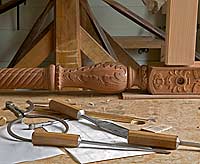
Study Visits
Teacher-led student study visits to Colonial Williamsburg take hundreds of thousands of students back in time more than 200 years. Learn more about Study Visits.
Williamsburg Teacher Institute
Through the Williamsburg Teacher Institute, Colonial Williamsburg inspires hundreds of history teachers from across the country. During weeklong, on-site classes, the Historic Area serves as a living laboratory where teachers learn innovative and engaging ways to teach about the past. Learn more about the Teacher Institute.
Educational Forums
The Williamsburg Antiques Forum, Williamsburg Garden Symposium, and Colonial Williamsburg History Forum explore a range of present-day topics against the background of Colonial Williamsburg. Learn more about our conferences, forums, and workshops.
Notable Colonial Williamsburg visitors
More than 100 million visitors have enjoyed the Colonial Williamsburg experience since 1932, among them have been world leaders including U.S. presidents Franklin Roosevelt, Harry Truman, Dwight Eisenhower, Lyndon Johnson, Richard Nixon, Gerald Ford, Jimmy Carter, Ronald Reagan, and Bill Clinton. More than 100 heads of state and government have toured the site on their way to visit the White House. Various other officials, ministers, and celebrities have also visited. View a slideshow of notable Colonial Williamsburg guests.
Philanthropic support
A private, not-for-profit educational institution, The Colonial Williamsburg Foundation needs and encourages tax-deductible gifts and bequests from all who treasure the Williamsburg experience.
Gifts enable the research, documentation, and interpretive training fundamental to the presentation of programs in Historic Area buildings, trade shops, and museums. Donations support the acquisition and conservation of art, preservation and maintenance of buildings, production of publications and audiovisual programs, and all educational activities. Thousands of philanthropic corporations, foundations, and individuals are helping to build a base of financial support for The Colonial Williamsburg Foundation.
Learn more about the restoration in “Williamsburg Before and After.”
Available through www.williamsburgmarketplace.com

